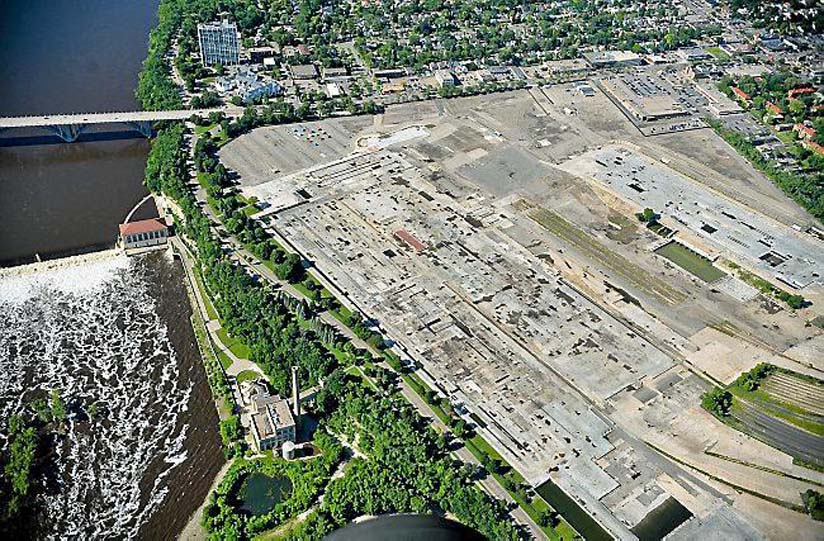
St. Paul Minnesota USA - At first glance, the merger of Canadian-based CP with a little known U.S. railroad based in Kansas City would
attract little interest, much less concern, here in St. Paul.
But when that Canadian rail carrier happens to own at least 40 acres of scarce, functionally vacant, real estate in the West End and Highland Park, both the
implementation and outcome of that merger should, instead, be of major concern.
Fortunately, rail mergers of this sort often turn on how much support can be mustered from key state and local public entities as the parties seek federal
approval.
But that support typically commands a price.
In this case, the price must include the acreage described above, known locally as the CP Spur.
Here's why:
The spur once carried thousands of freight cars each year to and from the Ford assembly plant and the long-shuttered Schmidt Brewery at Randolph and West
Seventh.
But now, the real estate supporting these and other West End industrial areas is finding higher and better use, making it unlikely that boxcar carrying freight
will ever again move over these tracks.
As it happens, the 60 to 100 foot wide corridor itself remains intact and without significant encroachment over its entire length between Randolph/West
Seventh and Highland Park, save for the tracks themselves.
As such, it represents a valuable public asset that now best supports the movement of people and information rather than rail freight.
This could include a transit guideway, recreational and commuter trails, fiber-optics easements, and even a roadway connecting the traffic challenged Highland
Bridge development with Highway 5 near Sibley Plaza.
There is also trail and transit oriented development potential due to the spur's neighborhood connectivity and proximity to MSP airport.
There have been attempts over the years to buy and convert the spur to public use, but they have been frustrated by bureaucratic indifference from the
railroad and by deployment uncertainty on the part of would-be public sector buyers.
That has changed, as CP must now seek state and local support for a merger that does little for Minnesota or the Twin Cities, which stands to lose a couple of
hundred regional CP administrative jobs to Kansas City, and gain more mile long oil, grain, and chemical trains rumbling through town.
It would be a small ask, therefore, to compel CP to part with US$10 million to US$20 million of idle right-of-way real estate no longer attractive to rail
freight shippers in partial exchange for approval of a business venture expected to generate US$200 million per year in railway operational
savings.
There is also a cost to do nothing, and it is steep.
Railroad real estate contractors could sell the corridor piecemeal to speculators or adjacent property owners, thereby pre-empting any beneficial public
application in an area where mobility is at risk from traffic snarling streetcars on nearby West Seventh and from traffic calming measures on nearby Shepard
and East River Road arterials.
Or, possibly worse, Kansas City-based rail operations managers could use the idle tracks left in place along the spur to store surplus empty freight cars
deployed in toxic materials service, not the sort of neighbors Ford site developers might have in mind for their trend setting urban village.
Federal regulatory approval of this merger is not automatic.
A similar deal between another Canadian carrier and U.S.-based BNSF Railway was denied back in 2000, partly over concerns of foreign control of a strategic
U.S. asset.
And don't discount politics as usual here, given that the merger proposal came out of Calgary just weeks after Donald Trump, no friend of Canada, left
office.
In that respect, this community can and should use its political clout to press the Biden administration, a friend of Minnesota's, to include the CP Spur in
any merger settlement with CP, so that the spur itself can be re-purposed to serve the common good.
With so much at stake, our civic leaders can figure out later how to deploy the underlying property.
The public just needs to secure that property now, as there has never been, nor will there likely be, a better opportunity.
Jerome Johnson.
(because there was no image with original article)
(usually because it's been seen before)
provisions in Section 29 of the Canadian
Copyright Modernization Act.

